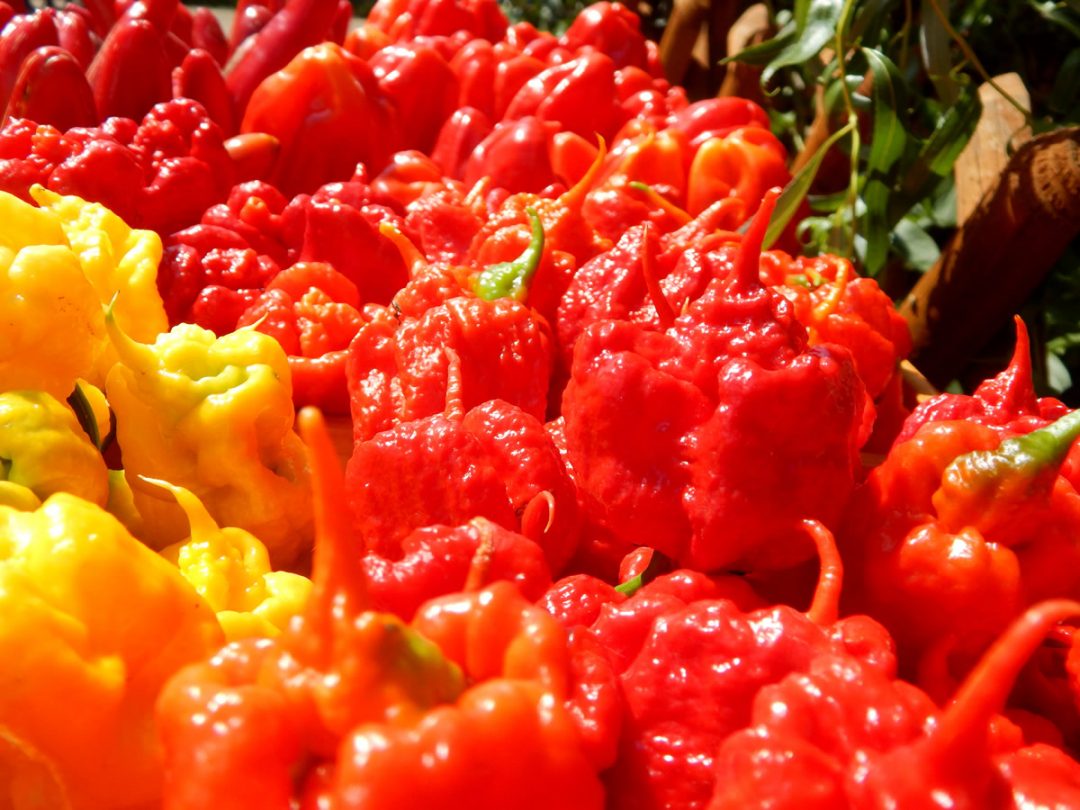I think all of you may know what capsaicin is. You may have heard or read about it… basically this causes the unforgettable hot taste of your favorite chili pepper.
Obvious as it is, I often meet strange and of course false statements regarding capsaicin. It is not a big deal said by the guy next door, who can not differentiate between a bell pepper and a habanero. He is just a consumer, not a chemist. On the other hand it is a kind of shame found in a university dissertation.
After reading a lot of half true-half false ‘bla-bla-blas’ I decided to dig a bit deeper in the topic to provide an instant pack of information from authentic studies and other reliable sources.
Honestly I am not a specialist, but a layman. Therefore It is easy for me. If I find something too boring, or too hard to understand, I simply skip it. Maybe it is not too accurate, but for me it is so practical.
My method is observation. After spending a long time observing, testing, checking something, I will be able to see the consequences as sources of my observed rules and laws. Of course these results contain the chance of mistakes, as I start from only the details of reality and build a model of the whole world from it.
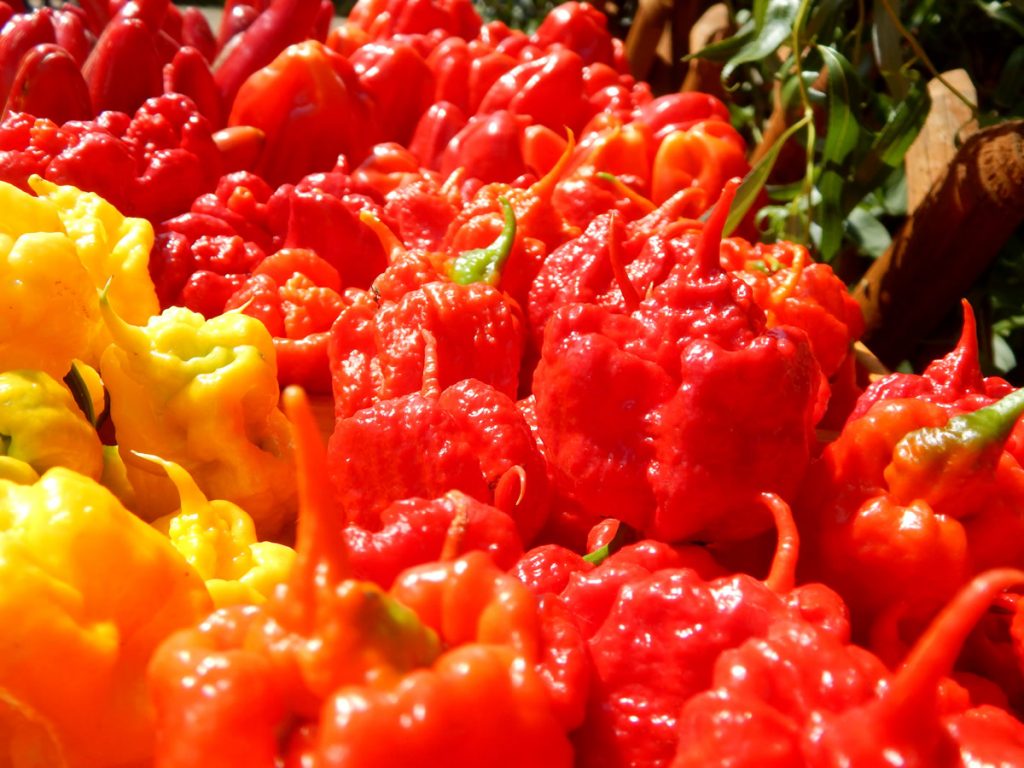
Okay, let’s jump on into it! … What do we know about the hot taste?
Our dear friends paprikas or chilis (whatever you call it) have something in common.
During their lives they produce a substance called capsaicin, which gives a hot taste if we put it into our mouth.
In most cases we call this material capsaicin. Obviously different peppers have different intensity of hotness. We may think the more capsaicin they have, the more painful they will be.
If we believe this, we may think it is a fact that if we know how much capsaicin is in a pepper, we will know how hot it will be.
But it can be a big mistake!
Peppers have a minimum of five different kinds of compounds of capsaicin and minimum three capsaicin like compounds.
Let’s see the most common ones.
- Capsaicin (C) 69% of all capsaicinoids

- Dihydrocapsaicin (DHC) 22%

- Nordihydrocapsaicin (NDHC) 7%

- Homodihydrocapsaicin (HDHC) 1%

- Homocapsaicin (HC) 1%

From these five, the first three are the most important so-called major capsaicinoids.
- Capsaicin
- Dihydrocapsaicin
- Nordihydrocapsaicin
Less important ones are the minor capsaicinoids, such as Homodihydrocapsaicin, Homocapsaicin and more three vanillyl compounds, but I would stop at this point, because it starts being too boring. This will be more than enough to know they exist.
If we want to measure how much capsaicin is in a pepper, will we get the sum of all the capsaicinoids?
Nope, of course we will not. We only define the amount of the three major ones with the HPLC method. (High Performance Liquid Chromatography ISO 7543-2… I will write about it later…)
By the way capsaicin is a white sticky powder with no smell. If not clean, it is pretty much like paraffin. Its melting point is somewhere around 62-65 °C.
The molecule is stable, it is heat and frost resistant. It can easily be stored.
It does not dissolve in water, (0.0012g/100ml) but easily dissolves in acids, (it is not so exciting from the point of gastronomy) it also dissolves in alcohol and fat.
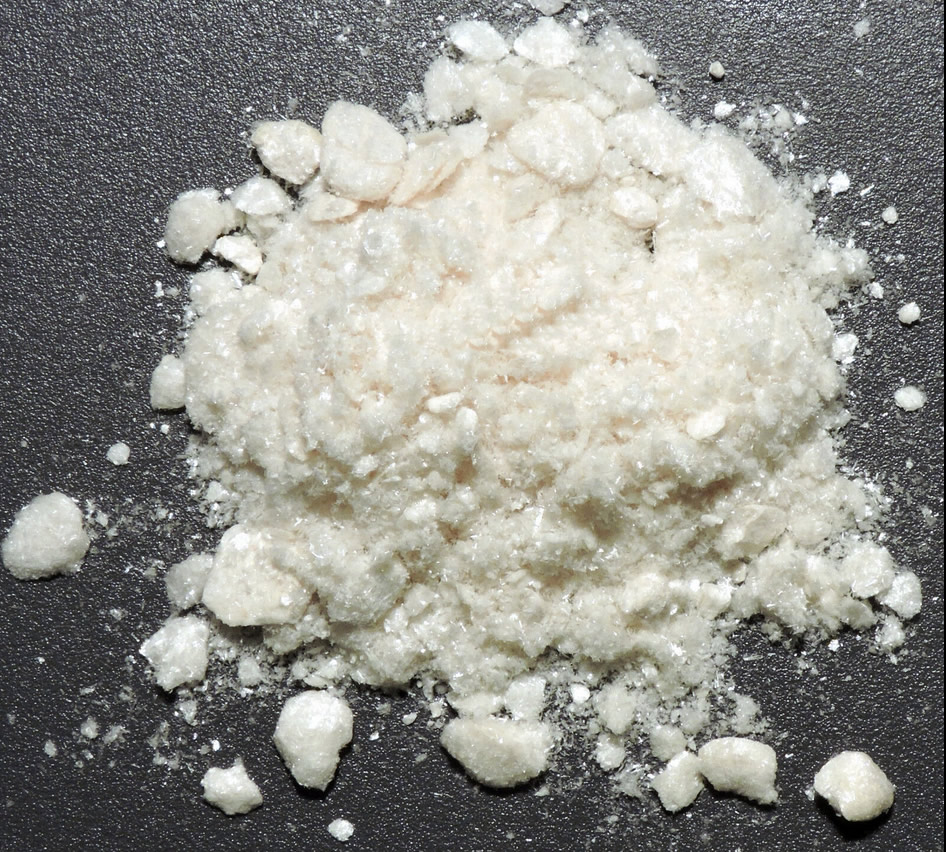
Pure Capsaicin
You can buy synthetic capsaicin from Chinese webshops. I would definitely not give it a try, I do not recommend it. It may be perfect for self defense purposes.
There are several studies about the intensity of different capsaicinoids.
Modern crossed chili peppers are not only hot because of the amount of capsaicin in them. The intensity of their taste rather depends on the ratio of capsaicin and dihydrocapsaicin. Based on some experiences we can say that dihydrocapsaicin can cause more intensive burning experience than capsaicin itself. Although it is not written in scientific studies, it is said in certain well experienced circles.
Let us focus on the hot taste. How can we feel this hot, or rather burning taste?
The existence of the capsaicin sensor receptor has been proven since 1980. It has a fancy name: transient receptor potential vanilloid 1 (TRPV1).
Do not ask me what it is!
This can be found almost all over our body. It is a kind of ion channel. It opens at around 43 C degrees and can be fully opened for certain kinds of ions transporting information to the central nerve system in the form of action potential. (Let’s say very low amount of electricity).
This channel can be opened not only by heat, but some chemicals such as capsaicin as well. This is why our senses feel chili burning hot.
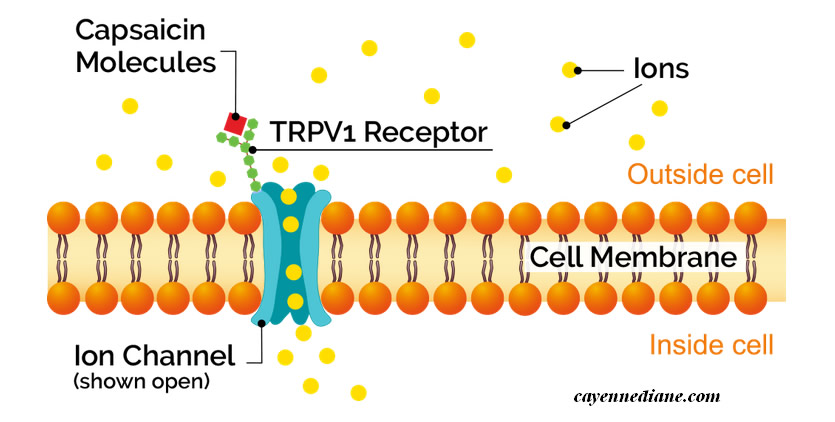
Our receptors can be overstimulated by large amounts of capsaicin and after the first period of stimulation it goes to an idle state and the burning experience will start being less intensive. That is how we can get in rare form for a chili eating competition.
But! This insensitiveness can be reached by calcium as well (Ca2+) [Szolcsányi J, Pintér E (2013) Transient receptor potential vanilloid 1 as a therapeutic target in analgesia. Expert Opin Ther targets 17: 641–657] or obviously ease the burning feeling. Maybe this is one of the reasons why it is good to drink milk after eating too much chili. It is worth a try.
I am not a medical doctor, and I do really think I will not be, so if you are interested in the topic, do not hesitate to dig deep into the internet, it is not a top secret.
By the way, I have another piece of bad news. In 2000, another TRPV receptor was identified, called TRPV4. Beside many other functions, it reacts similarly to capsaicin as TRPV1. The trick is the number of this receptor may vary in different persons.
If you have less from TRPV4, you can bear more hot chili, while if you have more, you will be more sensitive. It means there is a genetic background of the ability of extra hot chili eating abilities… sorry guys…
I was lucky to have a conversation with a medical scientist couple at a festival.
As they saw my chilis, they came to me and started telling their story. They tested the painkiller effects of capsaicin. The goal of their research was to replace morphine with a high dose of capsaicinoids in case of terminal cancer.
They said rats treated with capsaicin walked happily on hot surfaces hmmm…! It was deeply impressive. I like smart people!
Okay, let’s throw this medic stuff away, because I don’t really understand everything in depth. If I talk too much about it, I may make it worse.
Let’s talk about the chili pepper. It is more humane than medical science sometimes.

Let’s assume that chili pepper produces capsaicin to keep hogs away from tasting them with a smile on their face. It is a kind of chemical self defense strategy against plant eating animals. Maybe it is true. It is said that birds are not struggling from capsaicin, but I have never seen a bird eating chili in my garden, it is not a fashion in our town.
Unfortunately capsaicin is not working against caterpillars, it is a fact.
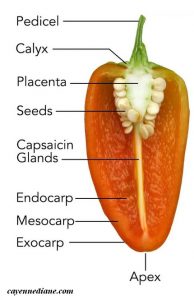 In the chili, capsaicin is produced by glandulas. In the case of Capsicum Annum (common paprikas, such as jalapeno) the gladulas can be found only in the center line called placenta and in the partition walls, called ribs.
In the chili, capsaicin is produced by glandulas. In the case of Capsicum Annum (common paprikas, such as jalapeno) the gladulas can be found only in the center line called placenta and in the partition walls, called ribs.
In Capsicum chinese like peppers, such as Bhut Jolokia, capsaicin can be found not only in the ribs, but in the flesh as well. The superhot chilis not only have more capsaicin, but they have more gladulas too. This is why Capsicum Chinese type of paprika is much hotter than the Annum type.
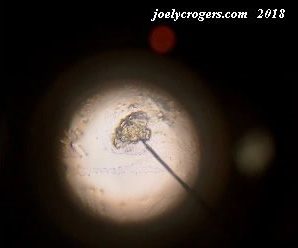
capsaicin-producing gland
Is there anything more that influences the hotness of the chili? Of course yes, many more things.
First of all, hotness is a specific attribute. A paprika with 50.000 SKU can not be hot as one with 1M SHU. It is obvious.
Another thing is that a pepper will show its attributes only within growing under ideal conditions. Bad soil, climatic conditions, temperature, humidity, or light makes the plant focus only on staying alive. The reflex of reproduction overwrites everything. Fruits will be smaller and low quality.
Under perfect conditions, we will have a great harvest, chilis with a nice smell and ideal hot taste.
Capsicum is not such an accumulating plant, but it sucks a lot of minerals and metals from the soil, such as nickel, chrome, even gold and silver.
In my experience the plant with good root-soil contact, when it can freely nurture from the rich soil prepared by microbes produces more delicious chili than the others grown in fertilizer solution.
In my opinion a living ecological system is essential… but it is one more long story.
It is interesting that the amount of capsaicin of the chili is not the same even on the same plant.
During the growth period it is changing in the paprika. Based on research the capsaicin is the highest in the phase of changing colors. Later it starts getting weaker.
If we take water away from the plant, capsaicin will not be more, only the concentration will be different due to the water-dry matter ratio. It is not the best idea, because 3% water loss causes fading, 5% will make your chili wrinkled.
Leaf creasing… Well, it makes the plant react. As an emergency response it will produce more capsaicin as it will not feel safe. (It will be afraid of being eaten).
It is not measured how much we can increase the amount of capsaicin in our chili. We can reach this state by removing the lower leaves, or cutting small roots of the plant. Cultivating is always stressful for the plant, we do not have to push the torture too hard.
Observing tomato research proved that the common mycorrhizal networks are used by the plants to send alarm to the other plants in case of any attack. This stimulates the biotic resistance of the others, producing chemicals against the attackers.
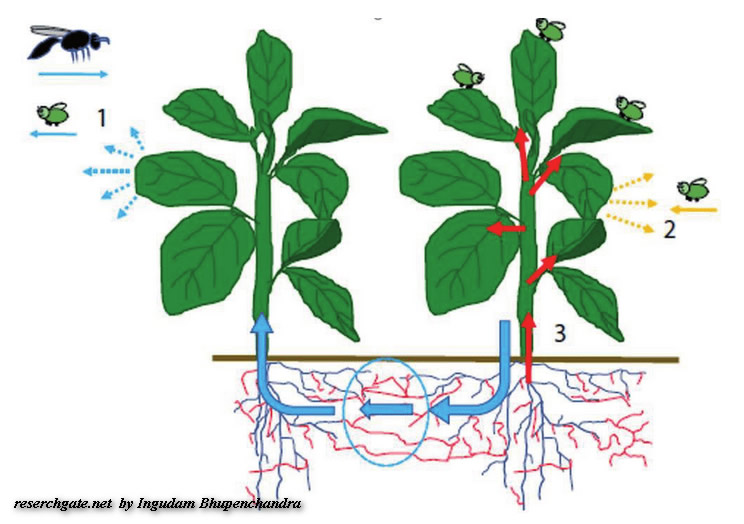
In other words, the fungus network, as a local organic internet helps the community to inform the members when some defensive chemicals need to be produced.
It is pretty much like the group of plants had a kind of collective immune system.
This is called systemic resistance, or RSA or inducted mycorrhizal resistance.
As I think the chili community with arbuscular mycorrhizal (AM) needs only one stimulated plant. They will broadcast the alert information via the CMN network to the other members, making them produce more capsaicin as a response to the physical attack. It can be an interesting topic for research…

There was a time when I spent a long time with north-east Indian type paprikas. (Bhut Jolokia, Naga Jolokia and so on…). That time I found a publication from the University of Manipuri.
It said the plants from the same population were raised in different places. One of them was taken to the heights of sea level, while others were taken to high mountains, with lower air pressure.
The result was surprising. The one from the mountains had a significantly higher level of capsaicin. The publication did not tell what significantly exactly means in terms of %, but it is surprising indeed.
How can we measure the hotness of the chili?
Basically there are two methods…. Sorry, I correct myself, there is only one exact way, the earlier mentioned HLPC (High Performance Liquid Chromatography) test.
Based on the standard (ISO 7543-2) we will have the exact numbers for the amount of the three major capsaicinoids.
In the case of a Bhut Joloika, we will have around 5.000-6.400mg/kg as a result. Nice, but it does not mean anything for an average man.
A whole generation has grown up with an imprint of colorful charts of SHU in their mind. It comes up every time you search for chili on the net.
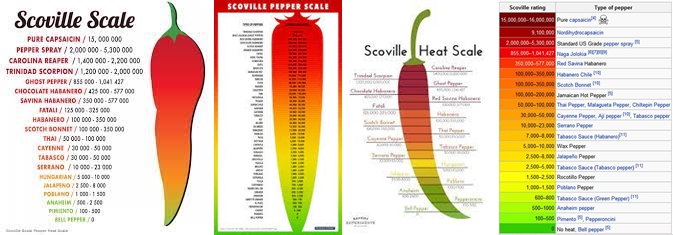
…because there is a so-called Scoville test as well beside the chromatograph to define how hot a chili is.
This is where the SHU numbers (Scoville Heat Units) originated from. In a nutshell the test tells how much you need to divide the certain amount of chili to reach the point where hot taste is only barely sensible. Finally you have the SHU number.
Say for example if you need to divide the amount of the chili by 10 the SHU is 10. In the case of dividing by 100, the SHU number is 100.
Pure capsaicin has SHU value of 16000000. This is a vital fact worldwide.
…but there is a big problem. Not with the Scoville test, that works, I tried it. Not with the HPLC test, that is way far the best.

It’s about a global SHU problem that I wanted to raise to the leading chili gurus all around the world, but somehow no one wants to deal with it. Maybe I am wrong (I am not), but if so, let’s prove it and I say sorry.
If you are curious and want to know what that problem is about SHU, you will have a chance to read about it in my next blog post.
Thanks for reading!

